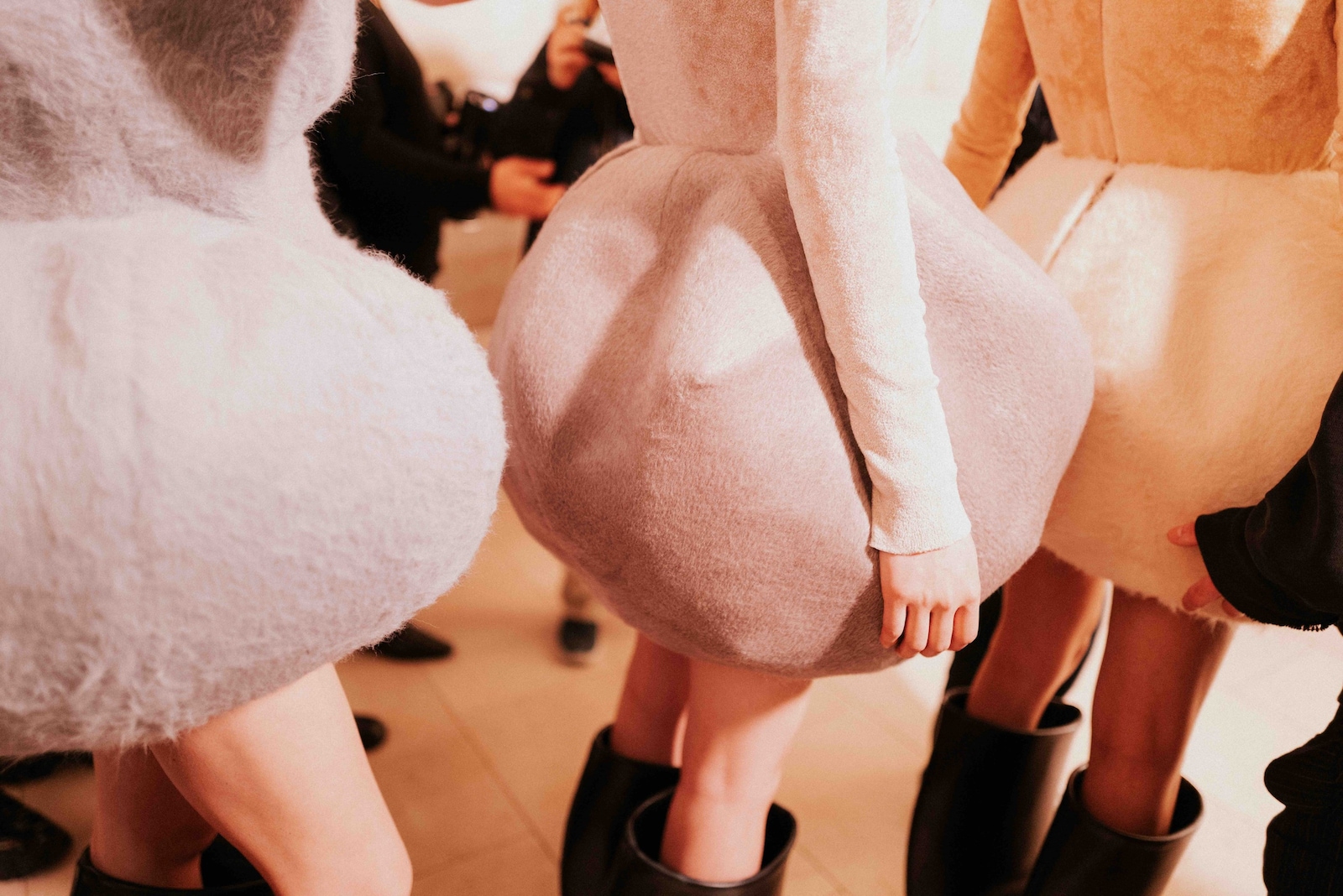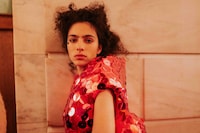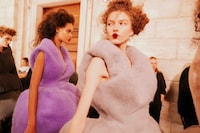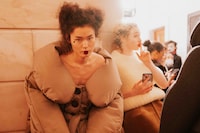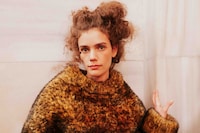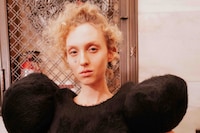It wasn’t so significant that Marc Jacobs’ show on Monday night was, technically, the final show of the Spring/Summer 2025 season. Seasons don’t mean much to Jacobs, after all. It mattered much, much more that it was the first fashion show on American soil as part of the second Trump administration, in the midst of a flurry of executive orders and official upheavals shifting the American way of life. Jacobs has never shied from making a political or social statement with his fashion shows – he called this one Courage. “I have come to understand that fear is not my enemy,” he wrote, in a note placed on every seat. “It is a necessary companion to creativity, authenticity, integrity and life.”
What does bravery look like, then, in clothes? In Jacobs’ case, it was an uncompromising reconsideration of form, rethinking the rules of attraction. Jacobs has been exploring doll-like proportions for a couple of seasons, pushing beyond the body with curves and blown-up details – but this season, he went even further. His silhouettes bulked out otherwise humdrum sweaters and trousers with newly bulbous proportions, hips pinched to points, lipstick reduced to an abstract polkadot smooch. Cocoon back coats hunched around bodies, puffy peplum pockets fluffing out in front; evening dresses came in thickly twisted clumps of velvet, or were pocked with giant sequins and ballooning at the hips like a disco Venus of Willendorf.
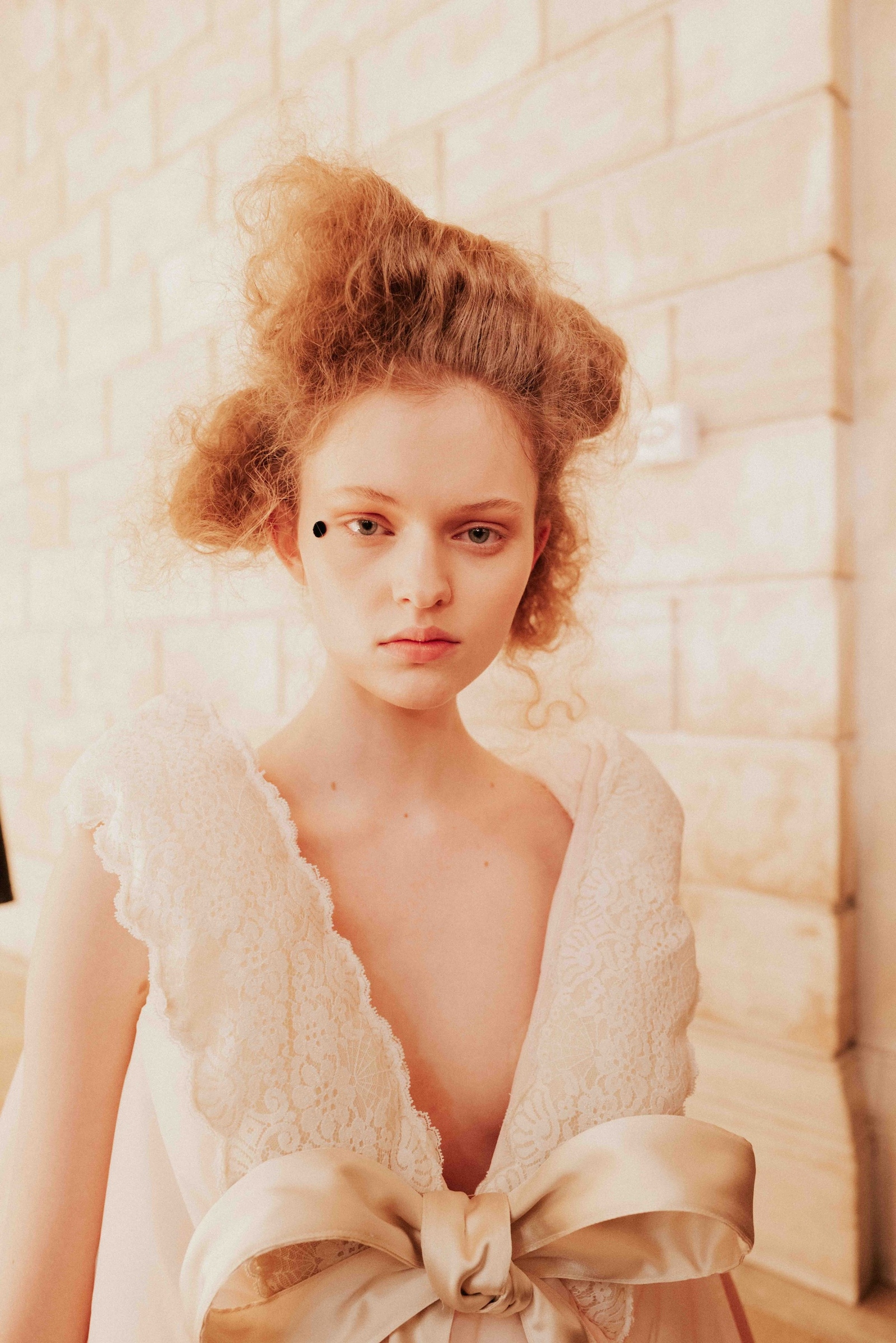
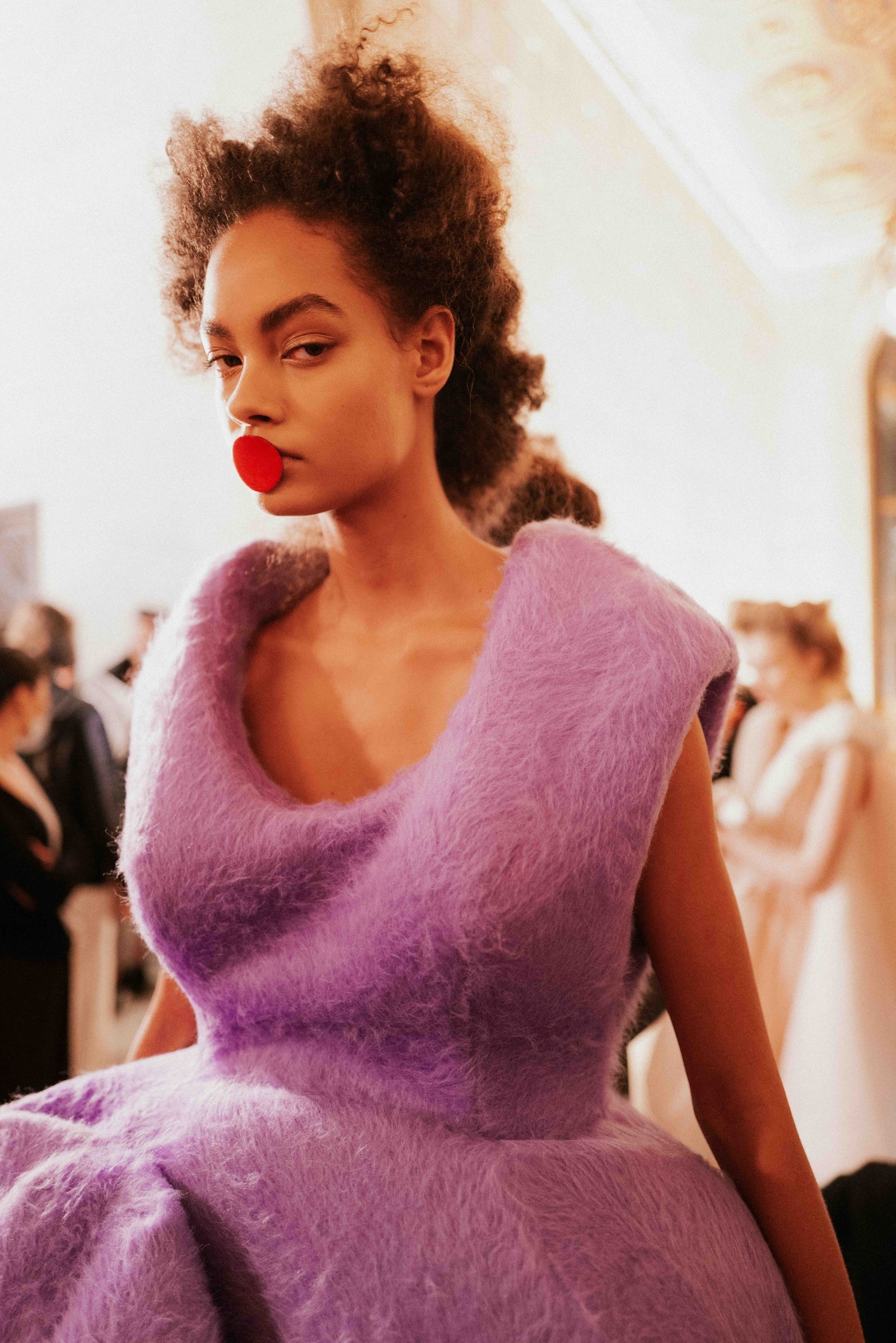
The idea seemed to be: what’s beautiful? Or rather: who decides what’s beautiful? In a moment of prescription and discrimination, Jacobs made a case for everything having its own beauty, defying conventions and prejudices. His vision certainly sat in direct opposition to the conservative views of “femininity” proposed in line with the new American administration, the regressive, retrograde visions of their mini-dresses and suctioned curves and manes of glossy hair (although they seem to propose that for men, too). As well as their vision of female bodies as controllable and commodified. Instead, Jacobs proposed challenging silhouettes, inflating and deflating and twisting garments, allowing a fragment of the recognisable to emerge – a kick-hemmed skirt, a simple sweater.
If fear was the motivating concept, these seemed like clothes afraid of nothing, and no-one. Inevitably, padding like this brings up concepts of protection – especially as Jacobs stated escapism wasn’t the point, and mentioned vulnerability. So was it wrapping in cotton wadding, to cushion against the knocks? Or soldiering up to fight? As a history lesson, the first time the human silhouette was altered through the cut of the clothes was in the 14th century in a garment known as the pourpoint, a shaped jacket with a heavily padded chest to buttress the body under then newly invented plate armour.
So that came to mind, as did the shapes of Rei Kawakubo, a designer Jacobs has consistently declared his unabashed admiration for and who is, perhaps, the inevitable destination when any fashion designer tries to abstract in a significant and meaningful way from known form. That said, even the shoes at Jacobs were re-thought, witchy-poo toes of boots curling upwards, the pointed vamps of prissy stilettos tugged out to resemble flippers or snubbed into a fat round globule, shapes you’d never seen before.
Which is a rare thing in fashion. An interesting notion, too, was how these clothes clung to ideas that Jacobs has explored before – the rounded silhouettes, outscale buttons and pocket flaps, sweetly 60s Mad Men suits and bore-core librarian sweaters. They’re notions he kind of owns. Certainly, they’re tropes he’s returned to again and again over the past 30 years – but they’ve never looked like this. So twisting the familiar to make it seem alien, and then making that alien look beautiful, in brave and arresting ways. That’s Jacob’s skill. That’s what great fashion really means. It takes courage.
